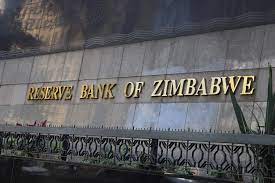
TATIRA ZWINOIRA THE introduction of gold coins this week will not benefit the ordinary person, necessitating the need for the Reserve Bank of Zimbabwe (RBZ) to inject smaller denominations of the coins affordable to the poor, analysts have said.
On Monday, the RBZ introduced gold coins at ZW$805 745,35 (US$1 902,63) and US$1 823,80 for a coin. The coin was introduced to mop up close to ZW$1 trillion (US$3,22 billion) money supply as of May, and to act as an alternative store of value to the USD.
Speaking yesterday at the virtual Alpha Media Holdings (AMH)’s Zimbabwe Independent Big Debate on whether gold coins can solve Zimbabwe’s inflation crisis, CEO Africa Roundtable chief executive officer Kipson Gundani said an average Zimbabwean needs to save for several months to afford the gold coin.

“The gold coins are coming in one ounce which costs over US$1 700. An average Zimbabwean earns less than US$200 per month, so for that particular person to be able to buy this coin, he or she needs to save for over nine months without eating anything. Clearly, the affordability when it comes to the poor comes into question,” Gundani said.
“If you go to America, for example, they have the American Eagle and it comes in fractions. There is one ounce, half ounce, quarter ounce and the tenth ounce. Fractionalising the gold coins would allow affordability by those who want to preserve value. This arrangement in its current state favours the rich; favours those with excess liquidity who are able to spend huge monies.”

He said the public deserved a chance to save their earnings in a stable unit like the gold coin as opposed to the falling Zimbabwean dollar.
United Kingdom-based economist Chenayi Mutambasere said there were likely to be challenges in that people will only access their investment in coins after six months.
Mutambasere was referring to the RBZ stipulation that a gold coin could only be sold to banks and approved agents after 180 days. However, the central bank allows the sale of the coin on a willing-buyer/willing-seller basis before the period for both the local and international markets.
- Chamisa under fire over US$120K donation
- Mavhunga puts DeMbare into Chibuku quarterfinals
- Pension funds bet on Cabora Bassa oilfields
- Councils defy govt fire tender directive
Keep Reading
“People do not keep their money under pillows to necessarily save. Zimbabwe is not a saving economy. We are very much a high transaction-based economy. If we were banking, we would have a high demand deposit economy. So this idea that people have money that is just under the mattress and they can keep for more than six months is fallacious,” Mutambasere said.
“I think people in Zimbabwe need money. They need US dollars as we are an import-backed economy. Our value chains embrace imports. This is why we have that demand for US dollars. We will continue to do so because the gold coin as I said is not available in smaller units. It’s not accessible to everyone.
“This idea that we are going to get this sudden release of pressure on the currency is fallacious.”
She highlighted that the arbitrage of purchasing the gold coins at the official rate and selling them in US dollars then being able to convert those proceeds into local currency before buying double the gold coins have to be dealt with.
Canadian-based economist Nyasha Mandeya said once the arbitrage was dealt with, real value could be unlocked from the gold coins.
“Internationally gold is a tradable asset and is liquid. It is a safe form of investment that is physical for those from less developed markets as ours; so I believe it’s befitting to drive the Zimbabwean monetary policy going forward,” she said.
The local price of the gold coin includes the international price per ounce of the yellow metal, cost of production and bank charges related to banks and approved agents selling the coin.
However, the local currency and United States dollar pricing is out of reach for most Zimbabweans as the average monthly salary in Zimbabwe dollars is equivalent to between U$120 and U$350 on average against a cost of living of about US$600.
The local unit has depreciated to ZW$439,11 to the United States dollar on the official exchange rate. On the parallel market the greenback is trading for ZW$850.
Thus, the market chose a stable unit with the government following the market as it codified the use of foreign currency in the economy last month.
Resultantly, prices are pegged against the parallel forex rate, currently at US$1:ZW$850, leading to hyperinflation.
- AMH publishes the Zimbabwe Independent, The Standard and NewsDay as well as the Weekly Digest – an online publication. It also owns Heart & Soul Television (HSTV) and radio station.






